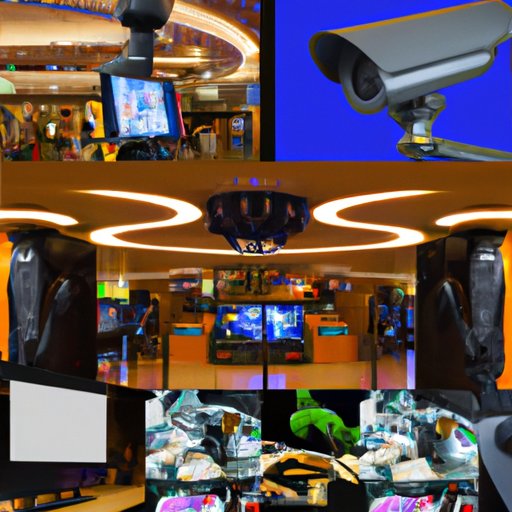Introduction
Movie theaters have long been a popular destination for entertainment, but with the rise of streaming services, there is increasing competition for audiences. As a result, theater owners are looking for ways to improve their customer experience, including the use of cameras inside the theater.
The purpose of this article is to explore the presence of cameras inside movie theaters, discussing the types, locations, and implications for audience experiences. It will also examine the potential benefits and drawbacks of having cameras in theaters.

Review of Movie Theaters with Cameras Inside
Cameras are becoming increasingly common in movie theaters, with some theaters using multiple cameras to monitor various areas of the venue. The type of camera used depends on the size and layout of the theater, as well as the desired level of surveillance.
In most cases, the cameras are located near the entrance of the theater, allowing staff to monitor who enters the building. Some theaters may also have cameras in the lobby or concession stand, allowing staff to keep an eye on customers and ensure that no one is stealing from the concession stand. In larger theaters, cameras may be used in the auditoriums as well, allowing staff to monitor the audience during screenings.
Examples of movie theaters that have implemented cameras include AMC Theatres, Regal Cinemas, and Cinemark Theatres. These theaters all use cameras to monitor their venues, ensuring a safe and secure environment for customers.
The Benefits and Drawbacks of Having Cameras in Movie Theaters
Having cameras in movie theaters can provide a number of benefits, including increased security, improved surveillance, and greater accountability. Cameras can help deter criminals, as they can be used to identify suspicious activity and alert theater staff to potential issues. They can also provide evidence in the event of a crime, which can be used to prosecute offenders.
However, there are also some drawbacks to having cameras in movie theaters. For one, it can be intrusive for customers to know that they are being watched. Additionally, cameras can be expensive to install and maintain, and they may require additional staff to monitor them. Finally, cameras can be hacked or otherwise compromised, which could lead to security breaches.

Exploring the Impact of Cameras on Movie Theater Security
Cameras can have a positive impact on movie theater security, as they can be used to monitor customers and deter criminal activity. Cameras can also help theater staff respond quickly to any incidents that occur, allowing them to take immediate action if necessary.
Additionally, cameras can help theater management identify security risks and make improvements to reduce these risks. For example, if a particular area of the theater is prone to theft, cameras can be used to monitor the area and alert staff to potential issues. This can help theater management address the issue before it becomes a bigger problem.
Talking to Movie Theater Management About Cameras Inside
If you’re interested in learning more about cameras in movie theaters, it’s important to talk to theater management. Ask them why they decided to install cameras, and what policies they have in place regarding their use. Additionally, ask if there are any restrictions on where cameras can be placed, and how they are monitored.
It’s also important to find out what measures theater management has taken to ensure the safety and privacy of customers. Ask if they have put any limits on the amount of footage that can be stored, and if they have protocols in place to protect customer data. Finally, ask if theater staff are trained in the use of cameras and how often they are monitored.

Investigating Public Opinion on Cameras in Movie Theaters
In order to get a better understanding of public opinion on cameras in movie theaters, it’s important to conduct surveys and polls. Reach out to moviegoers and ask them how they feel about having cameras in theaters, and if they think it improves the overall experience. Additionally, review online commentary from customers to see what people are saying about having cameras in theaters.
Finally, discuss the issue with movie theater staff and ask them what they think about having cameras in theaters. Doing so can help you gain insight into how cameras are affecting the customer experience, both positively and negatively.
Conclusion
The use of cameras in movie theaters is becoming increasingly common, with many theaters using them to improve security and surveillance. While there are potential benefits to having cameras in theaters, such as increased security and improved surveillance, there are also potential drawbacks, such as the intrusion of privacy and the cost of installation and maintenance.
It’s important to talk to theater management about the presence of cameras in theaters and investigate public opinion on the issue. Doing so can help you gain a better understanding of the impact of cameras on audience experiences and make an informed decision about whether or not cameras should be allowed in theaters.


